Virtual reality has been seen as nothing more than a promising gimmick for the majority of the last 20 years. However, the last couple years have seen VR advance by leaps and bounds, to the point where consumer-ready head mounted displays are out right now. The majority of this technology is on curve to come out in 2016, but the eager public can already access developer kits for many top names in VR.
VR has the promise to improve every aspect of technology, whether in the medical field, education, or in gaming, and with all of the emerging developers approaching this tech from their own perspective, virtual reality should be a fully realized technology by the end of 2016.
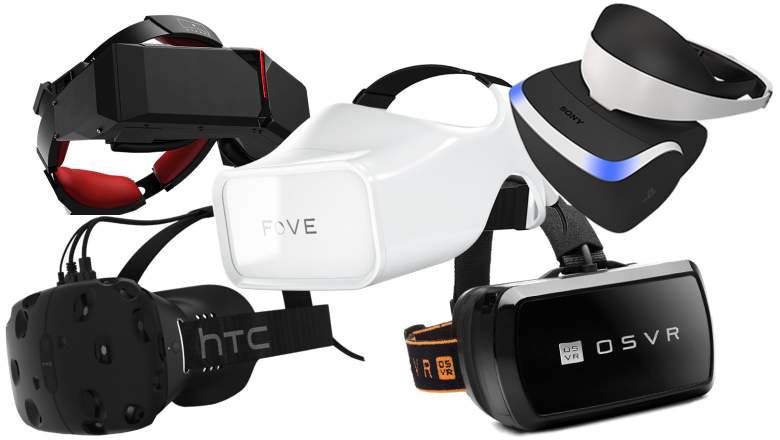
Though these 10 headsets’ availability vary from out now to pre-order forthcoming, they have proven through tech demos and press releases alike that they are indeed the HMDs to watch for. From big hitters like Oculus Rift, to VR with a cause like Razer OSVR, the best of the best are about to go big.
1. Oculus Rift
Oculus and their influential Rift headset have been synonymous with this decade’s VR boom. They are one of biggest names in VR, and now also one of the closest to delivering consumer access.
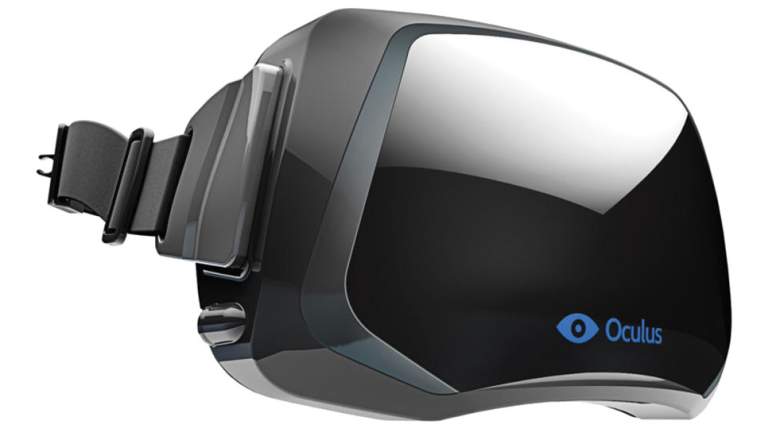
Yes, Oculus’ Development Kit 2 has been available since July 2014, but the release of their final consumer Rift model is right around the corner, and already promises huge improvements over their most recent prototype. The Verge goes into more detail on this year’s E3 preview below.
The release date for the Oculus Rift is the first fiscal Quarter of 2016, and it will be shipping with a wireless Xbox One controller. What is not covered in the above video, however, is where the Rift can draw content from. Oculus just recently revealed that you will be able to play both Xbox One and PC games on their Rift headset, hence the inclusion of the controller.
This feature capitalizes on Windows 10’s ability to stream games from the XBox One to a PC. To clarify, the Rift still wirelessly connects to your PC and will dominantly be used to access native Oculus VR games through an Oculus app store, but will also feature the option to stream any Xbox One game in the Rift “virtual living room.” This basically simulates playing the game on a much larger screen, but support may eventually grow to promote a full VR experience for the Xbox One.
And while gaming is clearly a big focus on all early VR units, Oculus offers a positional tracking camera that will lend itself well to all sorts of other ways to explore virtual spaces. The separate camera unit is placed in front of you when using the Rift, and they track a constellation of IR LEDs on the headset. That means the Rift enables you to lean over a surface, peek around a corner, or perform other detailed movements movements which reduce the feeling of motion sickness and enhance the feeling of immersion.
Additionally, the Rift promises a stunning resolution of 1080 x1200 in both of its OLED screens (2160 x1200 total), a 90 Hz refresh rate, and a FOV (field of view) greater than 100°. It even has integrated headphones which provide spatialized HRTF audio.
On May 6, 2015 Oculus VR announced that the consumer version will ship in Q1 2016 with pre-orders starting in late 2015. The price is yet to be announced, but consumer tech experts assume the price of any forthcoming VR headsets will be somewhere under the $400 point. This post will be updated as more information is released.
Oculus Rift Release Date: Q1 2016
Price: TBA
Pros:
2160 x1200 resolution and 100°+ FOV
Positional tracking for enhanced movement
Compatible with both PC and XBox One games
Cons:
Pricing information not yet available
Proprietary Oculus Touch controllers still need work
Will require a PC with a high-end GPU
2. Samsung Gear VR
While the Samsung’s Gear VR has a completely different kind of hardware running it, this collaboration between Oculus and Samsung promises to provide an equally immersive VR experience using nothing more than the headset and a smartphone. Instead of drawing its graphical power from your high-end PC graphics card like Oculus’ flagship Rift, the Gear VR utilizes the hardware house in the newest Samsung phones.
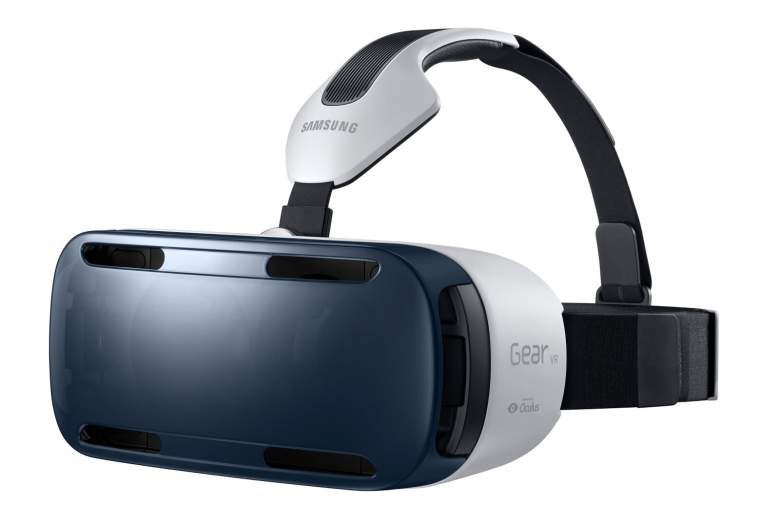
Obviously, the biggest benefit of this is that smartphones are far more ubiquitous than high-end gaming PCs, but each side of the coin has its limitations. In the case of PCs, the varying level of hardware power means you will want to use a benchmark utility to make sure your rig is capable of achieving at least 75 fps.
For mobile VR, Samsung has kept things simple and limited the Gear VR experience to only their newest models, which will handle anything thrown at them. Currently, the Gear VR has an Innovator Edition that supports the Galaxy Note 4, and a newer model that supports the Galaxy S6, and S6 Edge.
All of these phones have beautiful 2560 x1440 Super AMOLED screens and high-powered processors. This ensures that you will have nothing short of an incredible experience when hooking into either Gear VR model. Max from High on Android shows off the Gear VR’s graphical performance with an unboxing video below.
Even though the Gear VR has a higher available resolution than the Rift, its FOV is a bit smaller at 96°. This does not detract from the immersion, but is an interesting comparison point as developers establish a balance between pixel density and field of view.
When it comes to navigating menus, the Gear VR offers a handy suite of onboard controls: a built-in touch pad on the side of the headset that works via head tracking, as well as a back button and volume rocker. When it comes to game content, however, many apps will require Samsung’s Game Pad, which comes at a hefty price.
The Oculus App (your phone’s portal to the VR environment) is still free though, and there are games that work solely off the touch pad, so there is still plenty of content that can be enjoyed right out of the box. Note that the Gear VR has yet to employ positional tracking though, so again there are benefits to the headsets using more sophisticated hardware.
Thankfully, Oculus will be developing the final versions of the Rift and Gear VR in tandem. so the Gear VR’s content suite is bound to grow even more in coming months. Samsung has even hinted that a final version of what some call the Gear VR 2 will be out by holiday time 2015, which might even mean compatibility will be expanded to additional phone models. With any luck, the price will remain as it is, which would make it one of the best values in VR.
Gear VR 2 Release Date: Holiday Season 2015
Price: $199.99
Pros:
2560 x1440 resolution and 96° FOV
Onboard controls for easy menu navigation
Does not require a PC with a high-end GPU
Cons:
Only works with Samsung Note 4, S6, and S6 Edge
Ergonomics still need work
Costly proprietary game pad
3. HTC Vive
While PC gamers will be the target demographic for most of this first wave of consumer VR headsets, few companies have gamers more excited than HTC, who is working with Valve to deliver the HTC Vive. HTC will be combining its top quality hardware with Valve’s SteamVR software, which is a first-person rework of their existing game client for managing and launching VR games.
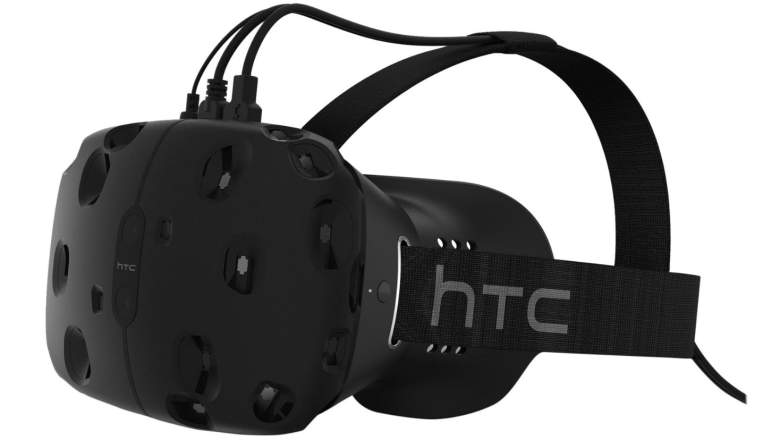
The coolest demonstration we’ve seen yet of what Steam gaming will be like in VR comes from StressLevelZero, a developer team working on a game for the Vive called Hover Junkers. The video below details their first time going hands on with the Vive.
As the video shows, the Vive offers laser-based positional tracking, similar to that of the Oculus Rift. The Vive may even be able to track position in ways beyond the capacity of Oculus, as their ski pole-like controllers are equipped with their own IR LED trackers to monitor the movement of your hands.
The current version of their controllers features triggers for gaming, two track pads that act like a fusion of a mouse and control stick, and even a grip that can detect squeezes. All in addition to their ability to be tracked.
This unit will also ship with two tracking cameras. It is not yet known whether this is to improve tracking, or if this is part of Vive’s plan to support additional LED trackers. The headset is currently built to support extra LED trackers, but it’s too early to say whether or not this will be a part of their consumer model. Either way, it may be used down the road for incorporating your room’s layout as environmental hazards, or possibly side-by-side co-op.
Under the hood, the HTC Vive sports a solid 1200 x1080 resolution per each eye (2400 x1080 total), which comes out to a FOV of over 100°. This combined with the strong support for tracking makes for maximum immersion. The final unit will even include integrated headphones, which will lend spatilized audio to the experience.
Another thing to look forward to is HTC’s partnership with big name content providers like HBO, Lionsgate, and Google, which we have not heard much about. There is plenty to get excited about, but just keep in mind the best is yet to come. All of this should be coming to fruition in time for the holiday season, at a price yet to be determined.
HTC Vive Release Date: Holiday Season 2015
Price: TBA
Pros:
2400 x1080 resolution and 100°+ FOV
Positional tracking for enhanced movement
SteamVR promises to be a major game platform
Cons:
Price not yet announced
Two positional trackers may be harder to set up
Will require a PC with a high-end GPU
Sony Project Morpheus
4. Sony Project Morpheus
Outside of the PC universe, Sony’s Project Morpheus is the big name for VR gaming, even though they are still keeping a lot of their technical details under wraps. Its release is still about a year out, but Sony promises to be a strong contender with its PlayStation 4-based hardware.
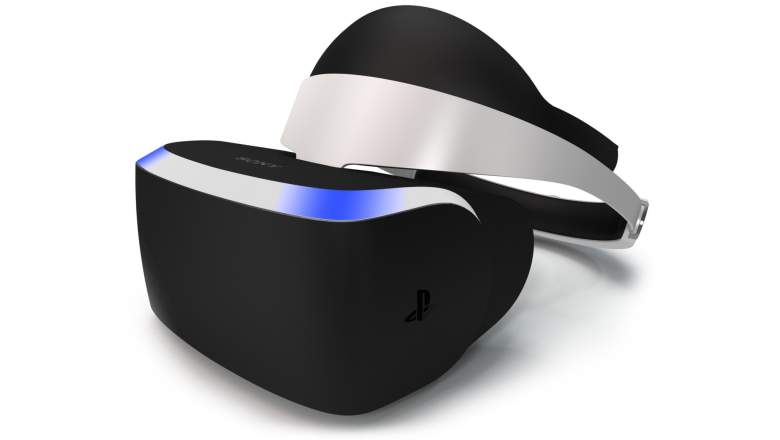
Its OLED 5.7 inch two screen display is 3D stereoscopic and sports a resolution of 960 x1080 per eye (1920 x1080 total). Recent improvements in the prototype have given it a wider 100° FOV and reduced motion blur. Its refresh rate of 120 Hz combines with its latency of less than 18ms, meaning this is one of the most fluid VR experiences out there.
The headset is comfortable and stylish, and features impressive ergonomics with simple setups for positioning the visor and lenses. Its stunning blue LED setup looks nice and also adds functionality via headtracking.
The Morpheus VR’s lightning fast tracking will work through the PlayStation Camera, which reads the movement of 9 brilliantly illuminated tracking LEDs. The PlayStation Camera can even track DualShock 4 controllers, though wand-styled PlayStation Move controllers appear to be the most functional with the controller tracking. Some of the ways the Move controller can work are detailed in the video below.
Project Morpheus promises deep immersion with their high-end graphics and control schemes, but an external headset has to be connected via a 3.5mm aux port to access the headset’s 3D audio spatilization. This could be hectic when attempting to use the Morpheus for local or online multiplayer gaming, which is definitely something PlayStation is focusing on more than other developers.
For now, Sony is keeping a lot under wraps about their Morpheus headset, including their planned release date. A proposed Q1 2016 launch would mean it can compete with Oculus for the early market, but again, it is fair too early to make any calls for that. Updates to come.
Project Morpheus Release Date: TBA
Price: TBA
Pros:
120 Hz refresh rate and < 18ms latency
Ergonomic and stylish design
Will easily enable local or online multiplayer
Cons:
Far-off release date
PlayStation 4-powered hardware means limited applications
Connects to the console with a 5m cable
5. Avegant Glyph
Avegant’s remarkably ambitious Glyph has a lot of things going for it, and among its most intriguing features is full portability. On top of being light, comfortable, and only slightly bigger than a pair of over-ear headphones, the current model of the Glyph can play video on battery power for up to 3 hours, or audio for up to 48 hours. It even charges via MicroUSB. And to top it all off, it connects via any HDMI-compatible device, so you aren’t tied down to one particular platform for content.
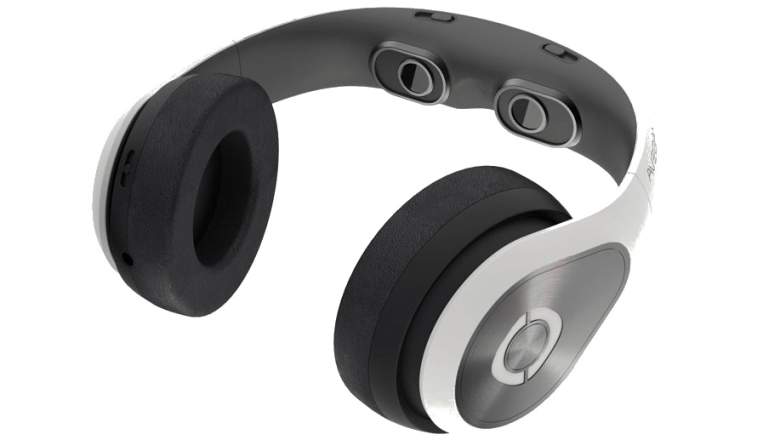
All electronic components are internalized, and connecting to a device is as simple as plugging in an HDMI. This simplified approach makes for near universal application, as the Glyph can be plugged into a PC or console for gaming, a phone or tablet for streaming content. And as this is one of the few HMDs in production that is not specifically designed with gaming in mind, the Glyph is branding its type of design as “mediawear.”
The device does have head tracking and supports an optional headstrap for high-action gaming, but otherwise can be slid over the eyes to display 2D or 3D video content. When the screen is not being used, the Glyph can double as high fidelity headphones with a frequency response of 20 – 20000 Hz, plus active and passive noise canceling.
The Glyph is most ambitious in its display, which instead of using a screen like other VR headsets, utilizes their “virtual retinal display,” which actually uses the retinas of your eyes as a screen. The Glyph 2 million DLP mirrors to project images directly into both eyes, using your brain as the image processor. This makes for an image that is free of pixelation from corner to corner, and the image projected by the Glyph mirrors natural light so viewing it is less stressful on your eyes.
The Glyph’s resolution of 1280 x720 per eye (2560 x720 total) and FOV of 45° will seem somewhat lower compared to other headsets, but the high fill factor of the micro-mirror array makes the resolution look much sharper than other headsets. This sharpness comes at the cost of a lower FOV, which is not an issue for anyone planning to view non-VR content on the Glyph, but does mean that the Glyph can’t deliver the same experience as the Oculus Rift.
To put it simply, the Glyph is intended to be more of a high quality HMD than a VR headset. However, it does employ the same technology, and has promise to grow into something more VR-centric with future version. For now, the Glyph is an excellent device for those that are unsure of how they will use VR, the Glyph promises to provide a flexible device that will create new opportunities to use the tech.
Available Fall 2015
Price: $599.00
Pros:
Virtual retinal display offers sharp, realistic picture
Portable form factor and battery powered
Streamlined graphics work with any HDMI device-compatible device
Cons:
High price tag
45° FOV does not offer full VR experience
Battery life needs improvement
6. Razer OSVR
Razer OSVR has a special place in my heart, as it is the only product that approaches VR from an open source perspective. OSVR (Open Source Virtual Reality) is a unique undertaking compared to other forthcoming VR headsets in that it is more for developers than consumers. There are no confirmed plans from Razer to produce consumer models, but this is still a possibility.
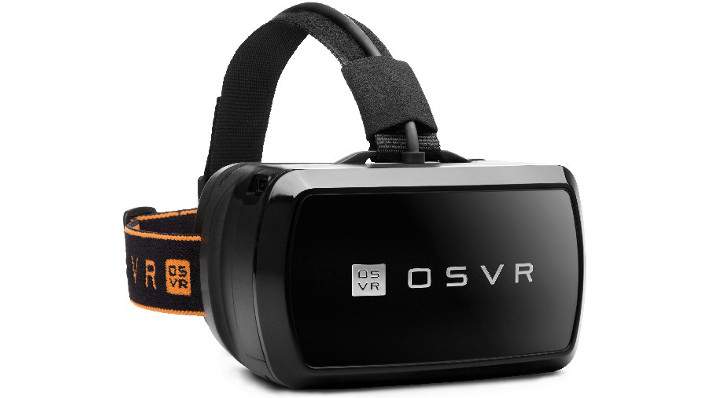
This is the type of headset that Razer would want to put in the hands of as many people as possible, as it runs on a modular software platform that can be customized by anybody. It can use any game platform, any proprietary VR software, and any controller, making it a highly adaptable tool for someone trying to create new applications. Even Razer’s hardware is fair game, and they provide schematics and drawings that can help you build your own at home.
Its low-latency 5.5 inch OLED Display offers 1080 x1920 FHD resolution with 60 Hz offers an impressive and immersive picture. But most impressive is that this screen is interchangeable with other types of screens, again opening a huge number of possibilities with developers. It has about 100° FOV, but this too can change by swapping out the lenses.
Considering that OSVR has potential as a functional and affordable headset, it is a big disappointment to hear the lack of plans for a consumer release. But don’t forget that you can literally build your own, which would be no simple task, but opens a lot of possibilities. Because of this, any hardware developer can use the OSVR as a building block for technology with even greater applications, perhaps training surgeons, creating new forms of therapy, or even a system for controlling security cameras.
Certain aspects of this HMD are rough around the edges, but the potential for growth is limitless. A kit to add positional tracking is now included with shipped developer kits, and there may be more in the future for augmented reality functions, mobile support, and more.
Razer OSVR Release Date: TBA
Razer OSVR Price: TBA
OSVR Hacker Dev Kit v1.2 Price: $299.99
Pros:
Open source software and hardware
Supports any peripheral or API
Capable of AR, VR, and mediawear functions
Cons:
Consumer product not in the works
Diopter adjustment needs work
Not likely to ship with its own peripherals (besides positional tracking kit)
7. Zeiss VR One
Precision lenscrafters Zeiss have now entered the VR arena as well, offering an alternative mobile-based HMD to compete with Samsung’s Gear VR. While its feature set is somewhat lighter than that of the Gear VR, its low price tag may give it just enough traction to become the definitive entry point into virtual reality.

In an excellent move, Zeiss has made mobile VR accessible to those with any smartphone powerful enough to run the software. They do so by using a tray system to fit different phones into the headset. You can buy one included with either an iPhone 6, Galaxy S5, or Galaxy S6 phone tray, or you can 3D print your own for any other type of smartphone with a screen size between 4.7 and 5.2 inches.
Picture resolution is completely dependent on which phone you use with the VR One (as is processing, audio, and tracking), but the Zeiss precision lenses offer a FOV of about 100°. The lenses are top quality, and do not give any blurry, headache-inducing visuals. Several ventilation openings prevent the lens from fogging, ensuring you have the best picture available.
The headset is sleek and reasonably sized, but you will most likely need the overhead strap to get a good fit. Aside from the two touch-sensitive side surfaces, there are no buttons on the device, which works well enough but can be confusing for those who are new to VR.
The Zeiss VR One can play any apps that have been developed for Unity3D SDK, an open source platform that already has loads of content available. Zeiss also offers a couple proprietary apps, including the VR One Media Center app, which allows you to launch other downloaded VR apps without removing the headset. There is much potential for growth on the software end, as the VR One even has a see-through front shield, which allows the use of smartphone cameras for augmented reality apps.
All in all, the VR One does everything you would want it to, especially considering the incredibly low price. However, there is no telling if this and other smartphone-based VR headsets will continue to evolve at the same speed as standalone HMDs, or even PC-based VR. At the same time, there is a chance that smartphones will continue to be a great way to deliver VR content. It is clearly too early to be calling shots like that, but if your interest is getting into VR as soon and inexpensively as possible, the Zeiss VR One is a great pick.
Price: $129.00
Pros:
Supports any smartphone with screens between 4.7 – 5.2 inches (no PC needed)
Highly affordable price
Strong app support
Cons:
Requires separate smartphone tray
Minimal built-in controls
Mobile-based VR headsets might not have the same longevity
8. Visus VR
Ambitions run high with Visus, who aims to blow both mobile-based and PC-based VR headsets out of the water by – yes, that’s right – using them both to create one ultra-affordable gaming HMD. Visus has seen some delays in manufacture, resulting in disappointment from pre-order holders. But now that they are back on track after falling almost a year behind schedule, Visus is ready to prove it was worth the wait.
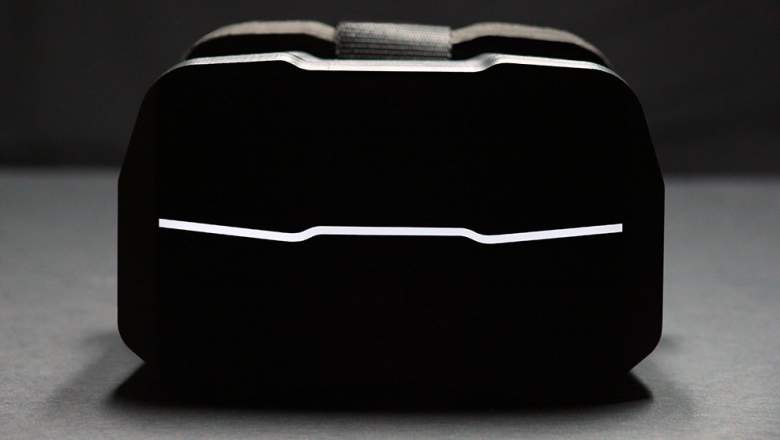
The basic idea of Visus VR is to use your already owned iOS or Android smartphone as a wireless display, and leave the heavy image processing to your PC’s high-end Nvidia GTX graphics card. Though it has garnered much skepticism, Visus’ wireless display is ready to go, and has some really impressive specs. The headset will support most smartphones, and as such, resolution will vary from one model to another. Since most smartphone screens have at least HD screens, Visus instead focuses on delivering the lowest latency in transmitting video data from PC to smartphone, and head tracking data from the HMD to to your PC.
HD (1280 x720) video is delivered in about a 110° FOV (depending on the phone model) at a latency of roughly 70ms, a fairly impressive number for wireless data transmission. Visus’ advertised 30ms ultra-low latency can only be achieved with standard graphical output, which won’t be as pretty, but will be highly functional. Either way, both output modes have a latency well below the 100ms mark at which motion sickness starts to set in because of visible lag, so the Visus VR will perform 60 Hz V-synced tracking about as well as headsets triple its price. Though this does mean that content will be more or less capped at HD quality, this is also the case for any headset, as HDMI cannot provide the proper fps for immersive UHD or 4K VR.
Another incredible feature of the Visus VR is its Tridef 3D software, which eliminates the need for specially-made VR content. The software can be purchased with the headset at a bundle price of $29, or from the Tridef website for $39, though we would have preferred the software to be included for free. Tridef works by taking over a game’s player camera and rendering it in stereoscopic 3D, creating immersive 3D content from 2D titles. Its dedicated head tracking also transmits data from HMD to PC game via mouse emulation, which means that tracking controls will work universally any game that uses mouse input.
Visus’ VR will also have several other features to round out the experience, including a 3.5mm headphone jack to connect any pair of headphones, anti-fog air channels to prevent lens fogging, and even a 2000 mAh built-in battery pack to keep your phone charged up to an extra 4 hours while using it as your wireless display. In spite of all these promising features, many are claiming that Visus won’t be able to deliver all that they promise.
Some have predicted that the fact that it takes any phone may cause geometric distortion and chromatic aberration, while it also stands to reason that adjustable lenses can correct this with ease. With no tech demos, and little presence at electronics conventions, we will just have to wait until the headset’s release to find out.
Visus VR Release Date: August 2015
Price: $149.00
Pros:
Highly affordable price
Supports any smartphones with screens between 4.7 – 6 inches
Tridef 3D software can render any 2D game in stereoscopic 3D
Cons:
Requires both a smartphone and a Nvidia GTX or GTXm 600+ graphics card
Only supports up to HD content at the moment
Tridef software is a $29 separate purchase
9. FOVE VR
Emerging from a highly successful Kickstarter with almost double their goal, FOVE is a new contender in the VR arena that offers 120 fps IR eye tracking as the “next generation” of VR controls. Eye tracking opens up a new world of possibilities in both gaming and non-gaming applications, based around both how the eye interacts with an image, and how it serves as a cue for emotions.
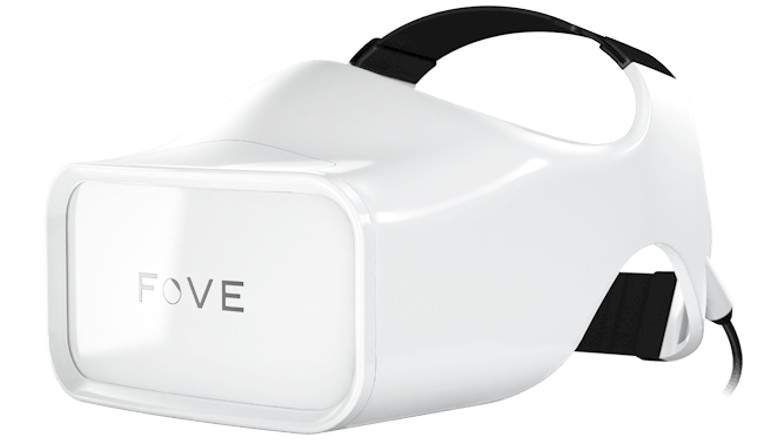
One of the biggest benefits of this is foveated rendering, which amplifies rendering power where the eye is focused, while reducing the render of peripheral scenery. This reduces the hardware requirements of FOVE VR without significantly impacting immersion. In fact, in some contexts, foveated rendering works to improve immersion, such as when it is employed through a depth of view effect that blurs out distant scenery when viewing closeup objects, and vice versa.
All of these features allow both the eye and your GPU to perform unstressed, even with this HMD’s high quality screen. Currently, FOVE prototypes have a 5.8 inch screen with a resolution of 2160 x1440, a rough 100° FOV, and low-latency tracking. More in depth information can be found in the video below.
One of the coolest things about FOVE is that this is a system that lends as well to game development as it does to a number of other fields, including medical research, assistance for the handicapped, and more. But as of right now, FOVE still needs to strike the perfect balance in eye tracking, as the eye moves far more frenetically than what is perceived by our vision because of a process called saccadic suppression. This could certainly lead to hiccups in tracking, especially when combined with head tracking, which is still in the works for FOVE as well.
And even with the generous Kickstarter funding earned for this project, additional funding for manufacturing could become a concern depending on how the launch of its competitor projects go earlier in the year. Again, for FOVE, it is too early to tell.
FOVE VR Release Date: Spring 2016
Price: TBA
Pros:
Advanced eye tracking adds a new level of control and immersion
Foveated rendering lightens graphical requirements
2160 x1440 WQHD resolution and 100°+ FOV
Cons:
Far-off release date
Eye tracking sensitivity needs to be refined for saccadic movement
Funding could be an issue for a larger release
10. StarVR
When Starbreeze Studios showed up at E3 2015 unannounced with their new StarVR headset in the works, they came off as the definition of an underdog. And though, nobody expected their partnership with InfinitEye, the collaboration has gamers thrilled as StarVR aims for a release that will establish new benchmarks for VR.
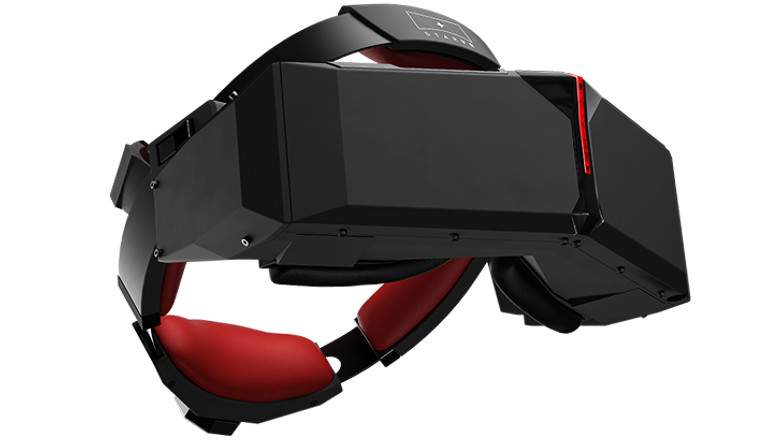
The big draw of the StarVR is its display, which is essentially a 5K resolution because of its ultra-wide FOV, 210° horizontal and 130° vertical. This is double what any other VR headset offers at this time, and even goes 75% farther than the limit of human field of vision. What this means is that the game is rendering extra content even beyond your peripheral vision, nearing full visual immersion.
Its two 5.5 inch QHD displays offer a resolution of 2560 x1440 QHD per eye (5120 x1440 total), and while their recent E3 2015 prototype had a refresh rate of 60 Hz, they estimate that their final product will release with a 90 Hz refresh rate. One obvious downside is that this HMD will have much more demanding minimum specs, making at a major expense to provide this sort of display. There are definitely trade-offs present at this point in time, a couple of which are discussed in more detail in the video below.
Since the StarVR presented at E3 2015 was just a prototype, much is subject to change. One thing expected to be improved is the StarVR’s positional tracking, which is currently managed via QR codes. The use of QR codes is handy because it allows the easy use of additional accessories, but Starbreeze is already discussing ways to improve this system.
One thing Starbreeze wants us to expect is a refined product. As such, they plan to take their time with the release of this product, intending to let industry leaders test the waters for months before their StarVR sees a possible release. The company plans to work alongside Valve’s innovations into VR gaming, but will also be entering the arena with their own custom game engine called Valhalla. This raises questions as to if other developers will be able to create content for this ambitious platform, or if Starbreeze gets to have all the fun.
StarVR will remain under close wraps for months to come, so we will be eagerly awaiting the next tidbit of news we get from the developers.
StarVR Release Date: TBA
Price: TBA
Pros:
5120 x1440 resolution and 210° FOV
QR-based positional tracking easily incorporates accessories
Will be produced alongside the custom Valhalla game engine
Cons:
No release date determined
Custom engine may only work with Starbreeze Studios games
Unconventionally wide FOV will require a very high-performing PC GPU
Original source: